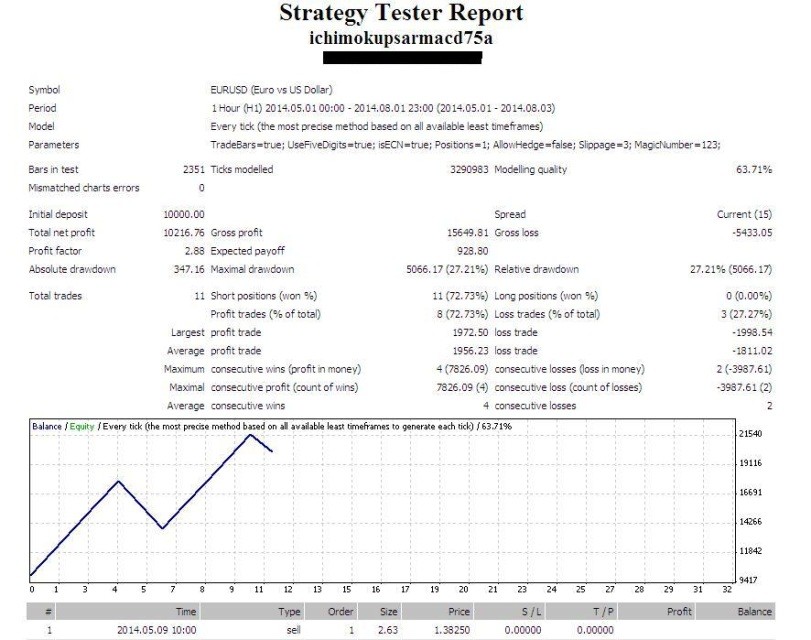How to profit from artificial neural networks
Post on: 13 Июнь, 2015 No Comment

How to profit from artificial neural networks
Last Updated June 1st, 2012
For over a decade, sophisticated futures and stock traders have used technical trading software to help make trading decisions. Yet, so far, the search for the Holy Grail has been elusive. Charting packages leave traders with the task of making subjective judgments to arrive at a trading decision.
Black box trading systems, touting impressive, historically-tested track records, give buy and sell signals based on undisclosed trading rules, which preclude verification of the results or customization of system parameters.
Fully-disclosed, rule-based trading systems, which include an historical testing capability, rely on optimized testing to find predictive trading models. This approach has become widely used in both end-of-day and real-time trading systems, evidenced over the last few years by a proliferation of such software programs, including those that give traders the ability to write and test their own rules.
Yet, by presupposing that a specific markets ebb and flow can be represented adequately by predefined trading rules based on single-market analysis, this entire genre of software has serious inherent limitations. Too often, trading rules, based solely on one experts research into market dynamics, fail to discern the intermarket and fundamental forces behind todays global markets. Also, rule-based trading systems by their very nature do not have the flexibility to adapt quickly to new market conditions not previously encountered.
Now, sixth generation trading technology, utilizing artificial neural systems an advanced form of artificial intelligence is about to challenge the prevailing analytic methods and techniques. Through the development of neural trading systems, which are adaptive to changing market conditions without the use of preconceived trading rules, this state-of-the-art technology is poised to redefine technical analysis as we know it today.
While testing procedures in todays software risk succumbing to the pitfall of curve-fitting or overoptimization, neural systems, by contrast, actually achieve greater predictiveness from extensive processing of intermarket technical and fundamental data. This is done by filtering out the noise to uncover the underlying patterns or trends that exist within a market and between related markets.
What, exactly, are artificial neural systems? How are they trained to recognize these hidden patterns within todays fast-paced markets? Finally, where is this breakthrough in trading system development and market analysis likely to lead? These are just a few of the questions that should be answered as traders start to experiment with and employ this new trading technology.
Artificial neural systems are known by many names including neural nets, adaptive systems, neural networks, neurocomputers, and naturally intelligent systems. They are information processing models inspired by how the human brain processes information. Based on simulated architectural models of the structure and function of the brain, neural systems, like the human brain, are not limited by predefined rules. Because they can actually learn and generalize from past experience, neural trading systems represent a new form of computer-based intelligence.
Neural systems comprise layers of interconnected cells or neurons. While neurons within a layer do not communicate with each other, neurons within adjacent layers do, with mathematical weights or connection strengths assigned to their connections.
Proper neural system design is critical for the system to train successfully. Developing a profitable neural system is both an art and a science, which benefits from experience in both software development and trading. One neural system design, feedforward back propagation with supervised learning is already being used successfully in financial forecasting.
To train a neural system, you must first provide it with fundamental information and technical data, including daily prices, volume and open interest, related to the market output that you want to forecast.

These inputs are first pre-processed or massaged using various statistical and analytical techniques. They are then paired with known values that you want the system to forecast (the desired output). Each input/output pair of data is called a fact.
Training involves an iterative process by which the neural system learns the underlying patterns within the data by comparing its forecasts with the known values to compute error signals. These signals then propagate backwards through the layers, modifying the connection weights between neurons to reduce such errors during subsequent iterations. When the systems overall error level is minimized, it is fully trained.
At this point, you can evaluate the systems predictive accuracy on new input data under real-time conditions. This is analogous to todays blind simulation testing. Depending on the results, you may want to experiment with changing the number of hidden layers, neurons, data inputs, outputs, or massaging techniques. You cannot train a neural system to predict outputs for different markets. Instead, you must train a unique system for each market. When you are ready to use a trained neural system to forecast prices and signals in real-time, you would simply provide it with the necessary input data each day.
Where is this fascinating breakthrough in trading system development and market analysis likely to lead over the next decade? Already, there are several neural training simulators available. Yet, since the field is just in its infancy, these programs have not been written specifically for use by traders. Therefore, for the time being, there is a fairly steep learning curve for futures and stock traders who want to become familiar with this new technology.
User-friendly, menu-driven, neural trading systems, including ones that are already pretrained, are just now being developed for use in the financial markets. Before long, application programs will be available that can accurately predict the next days prices of various financial and agricultural markets traded on exchanges throughout the world.
Reproduced with permission Louis Mendelsohn














